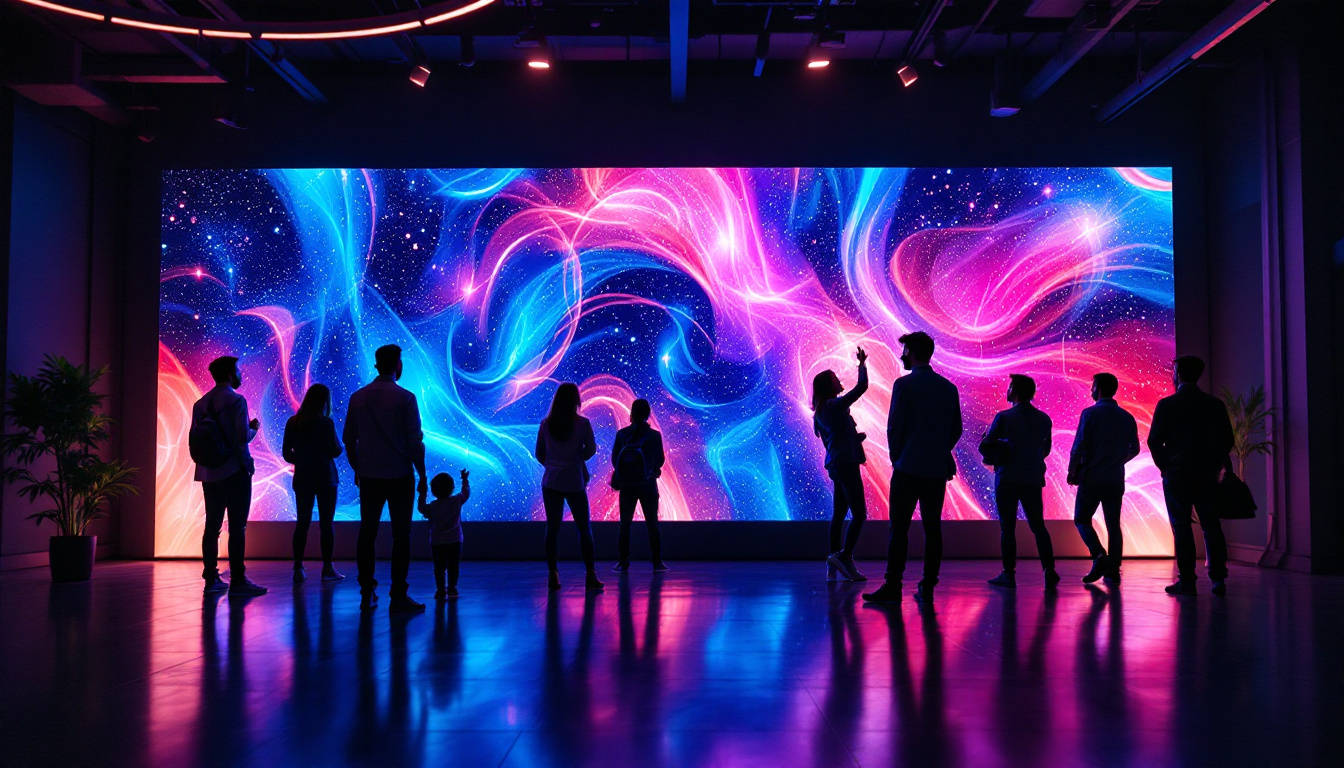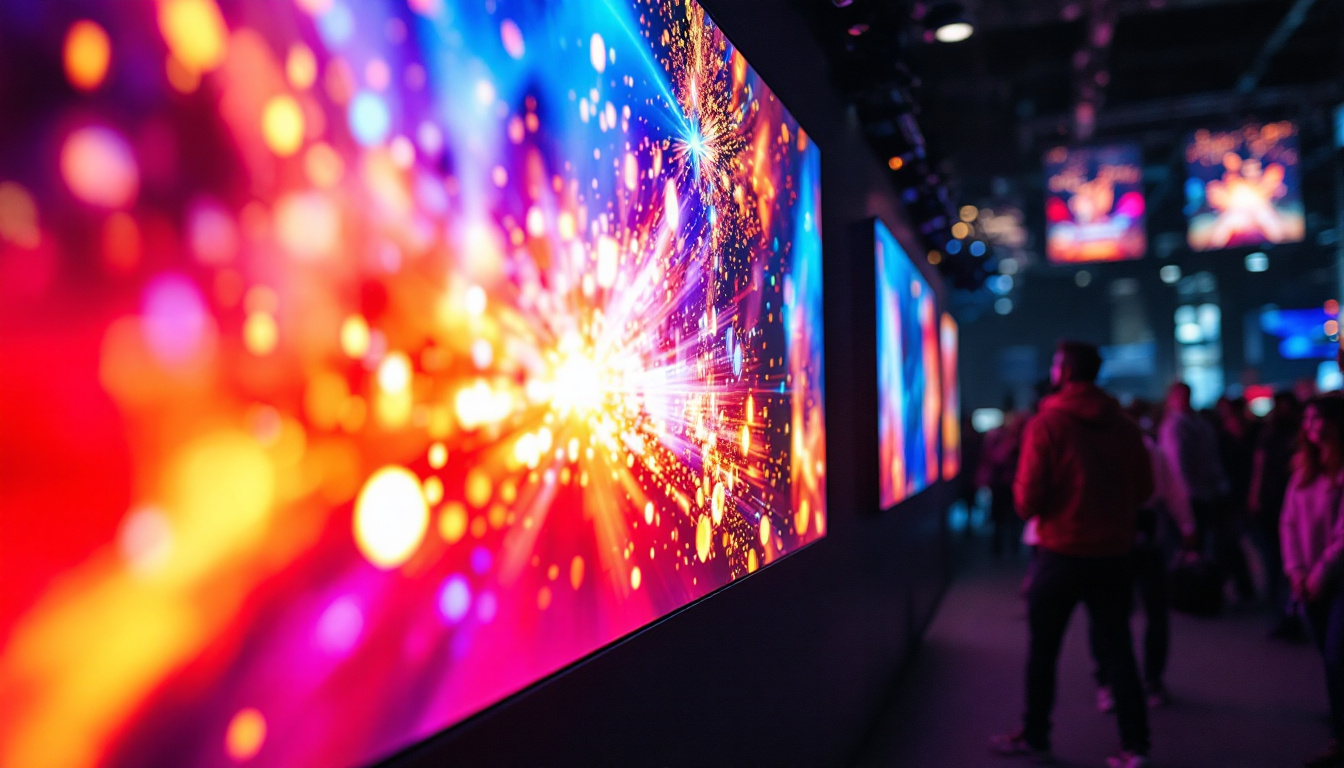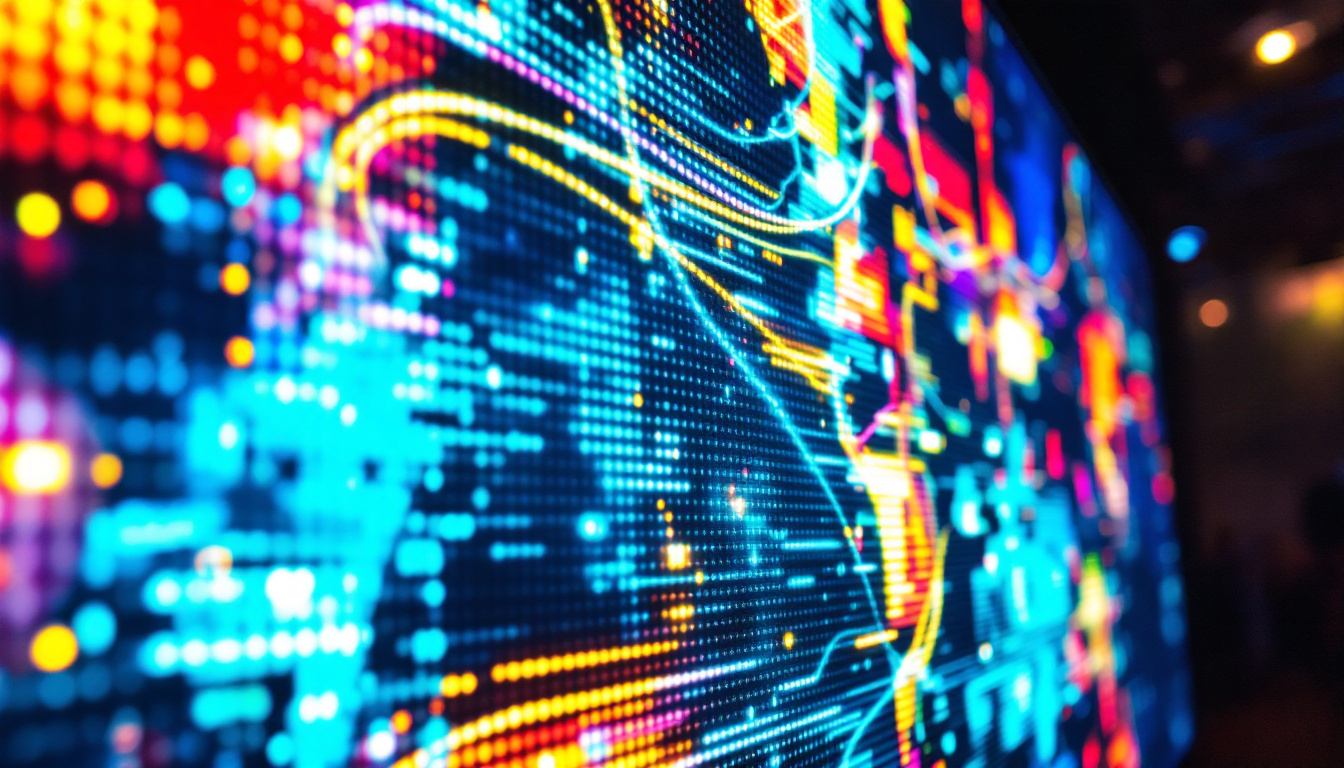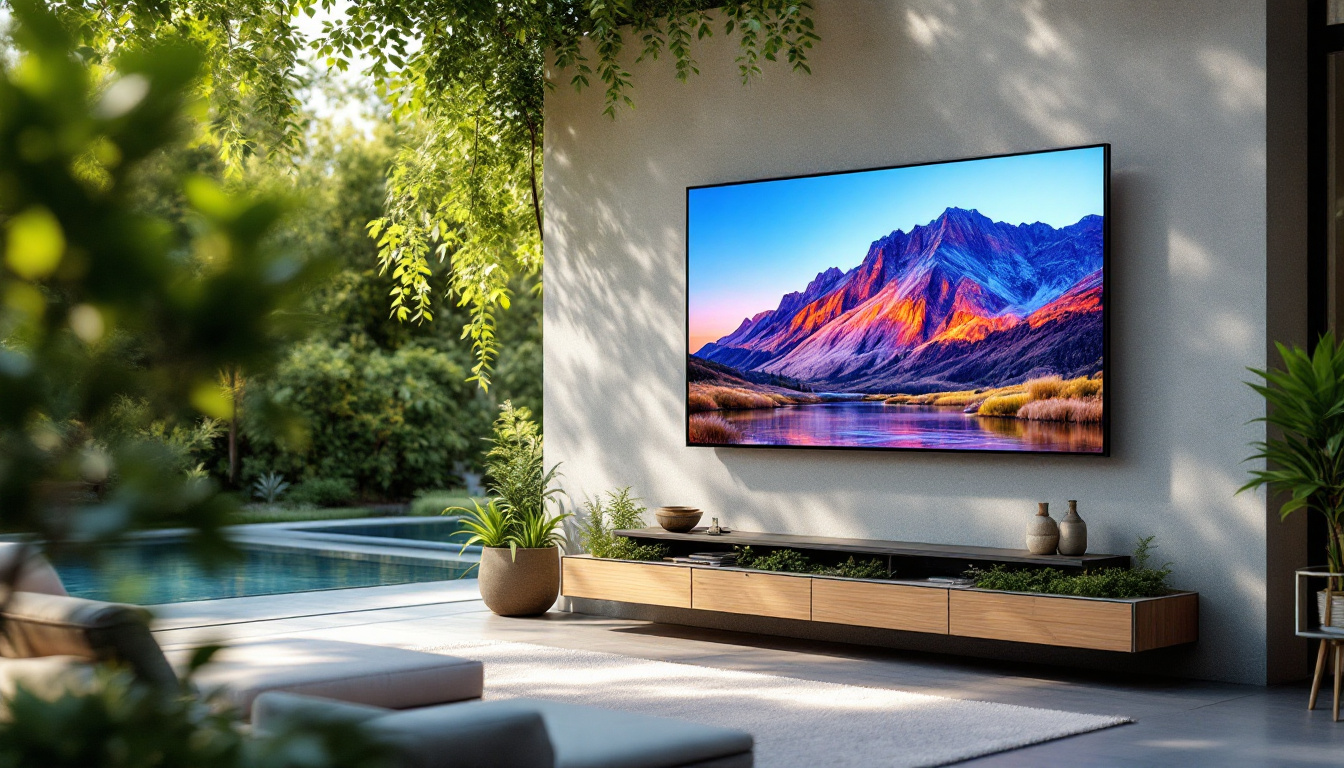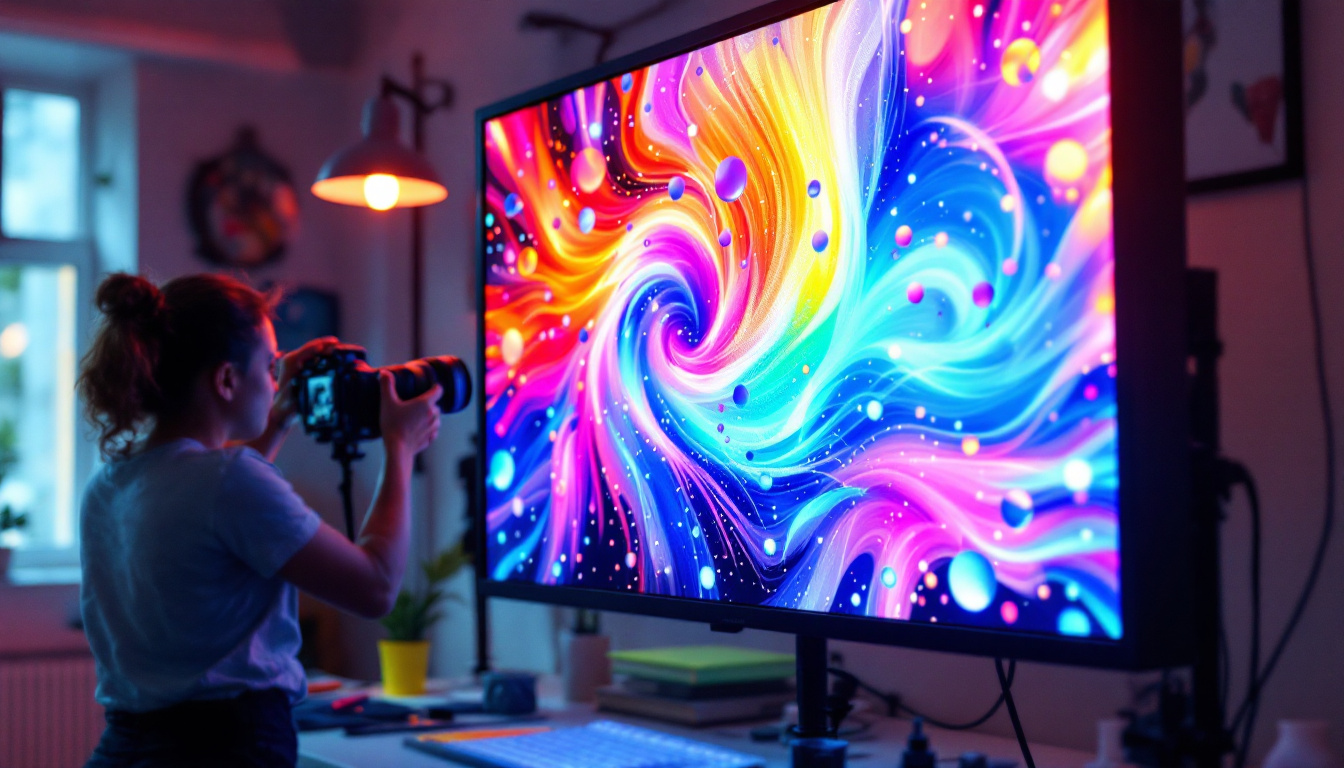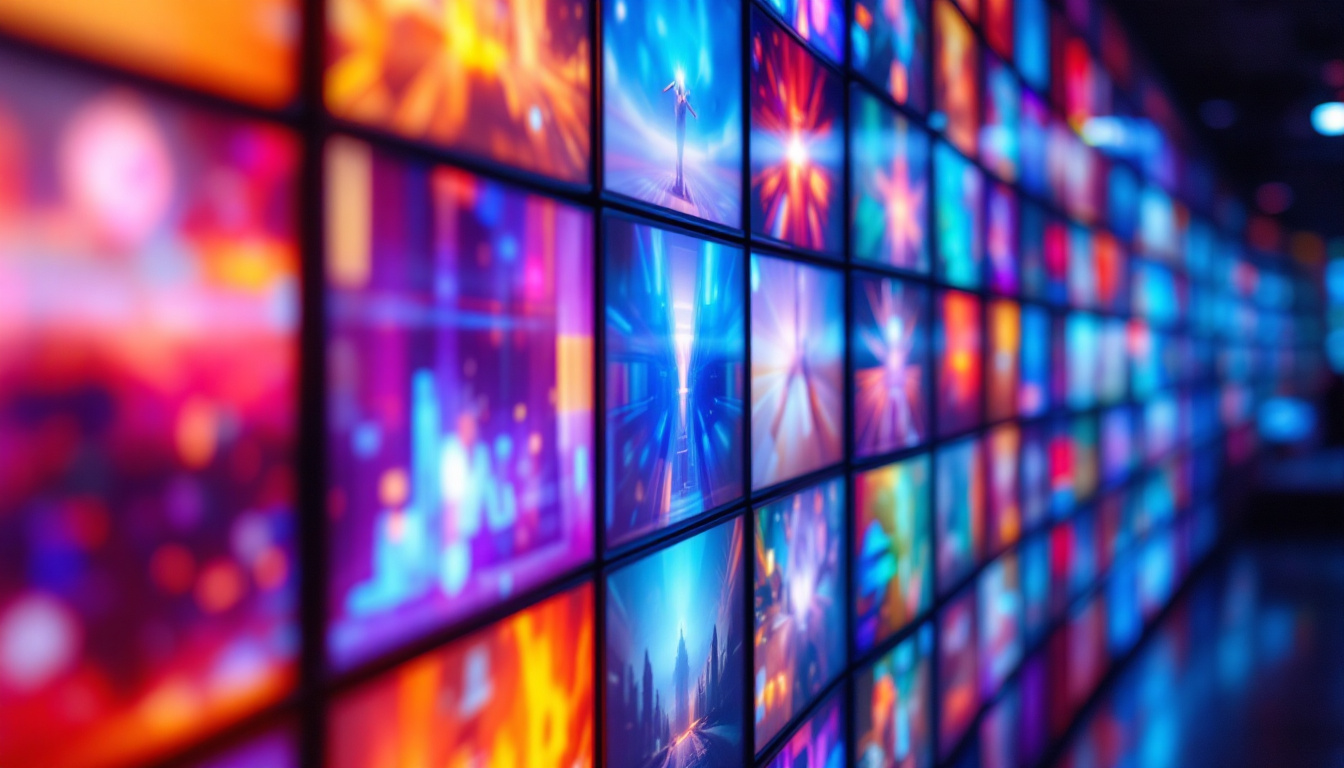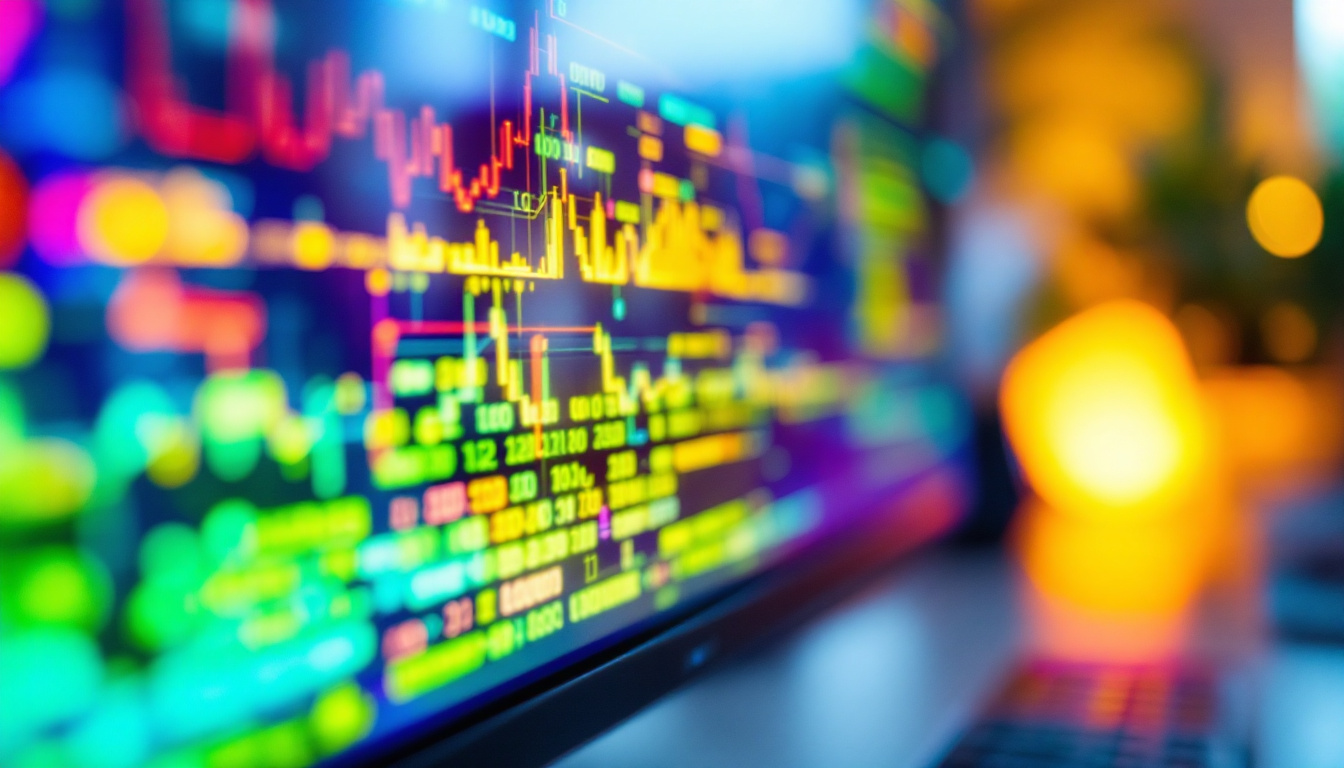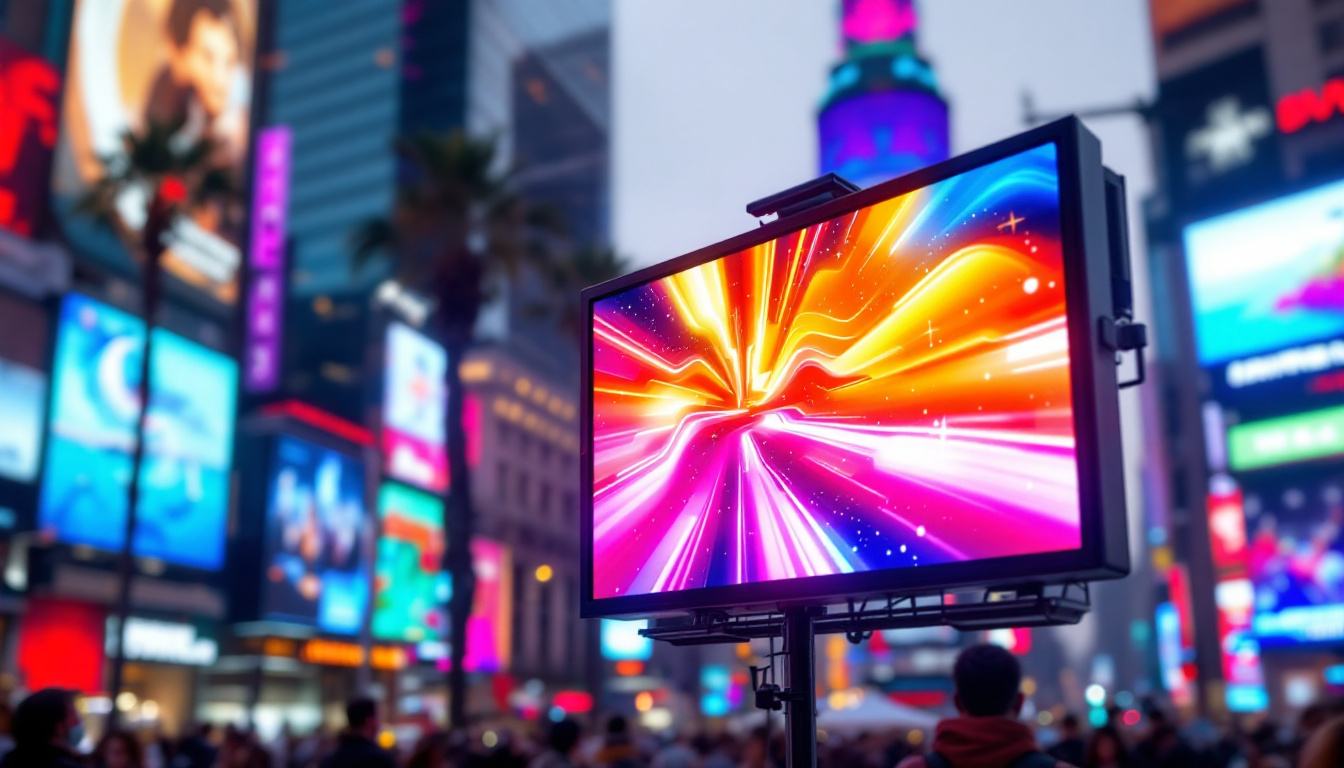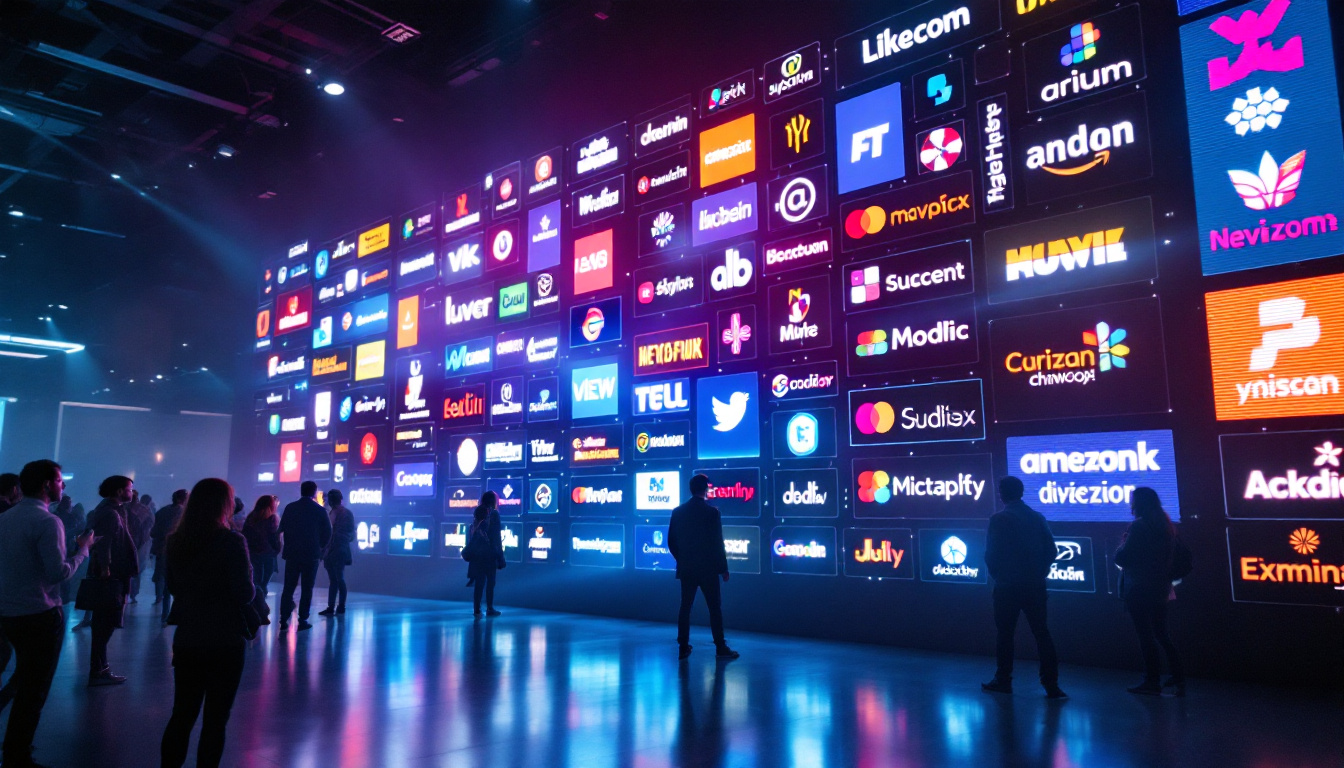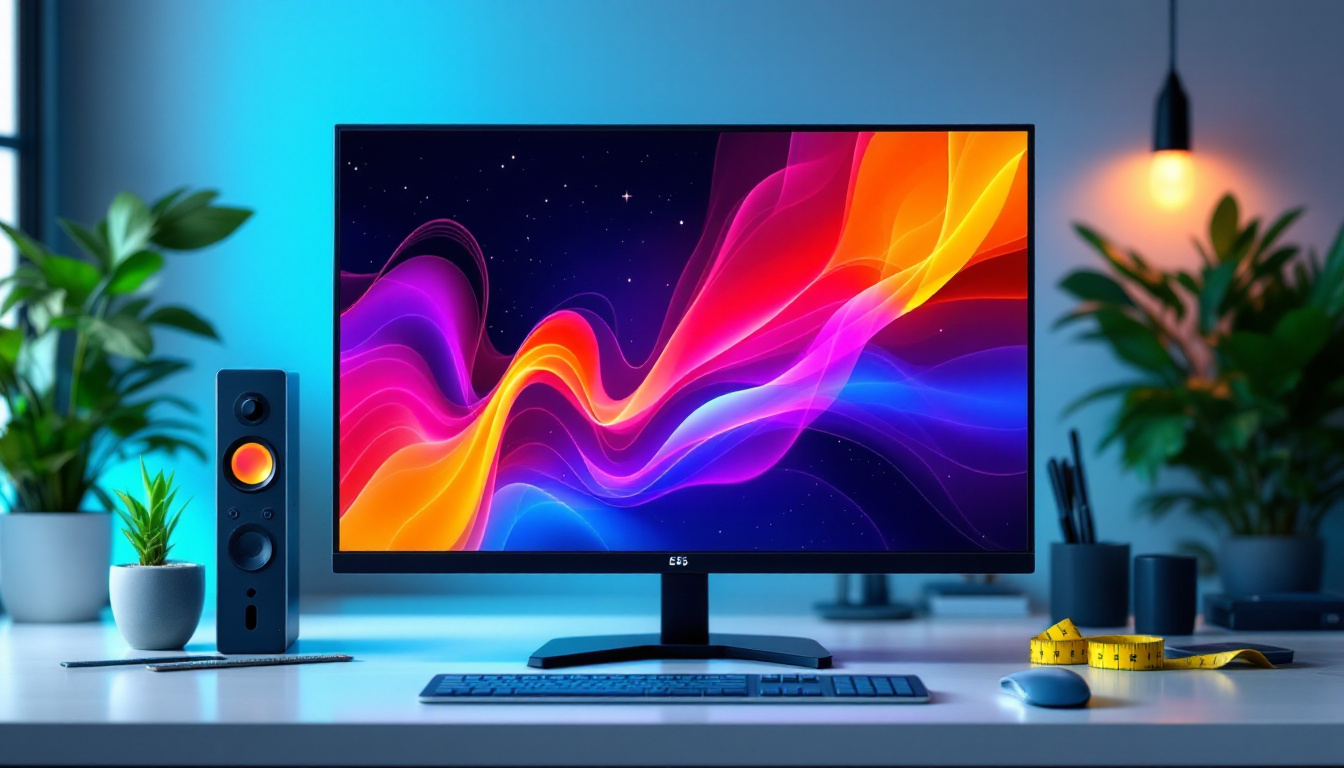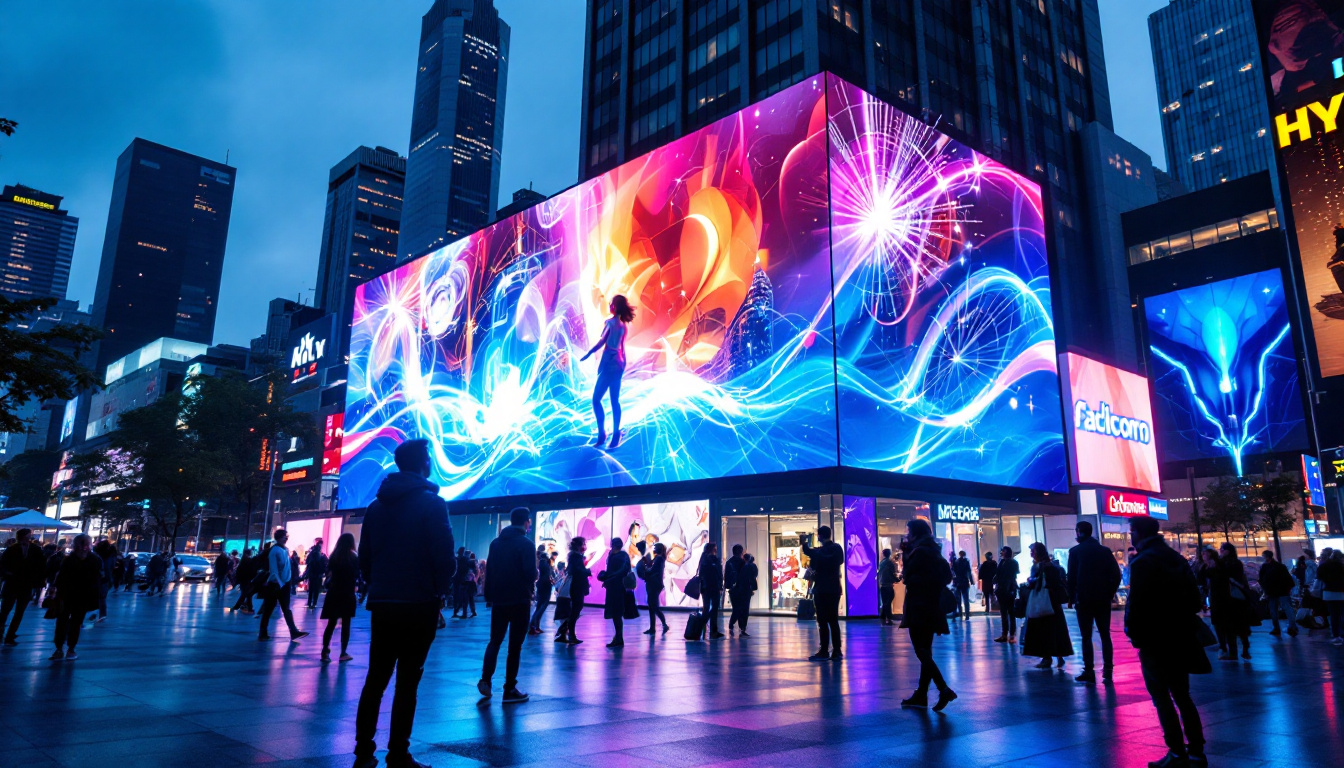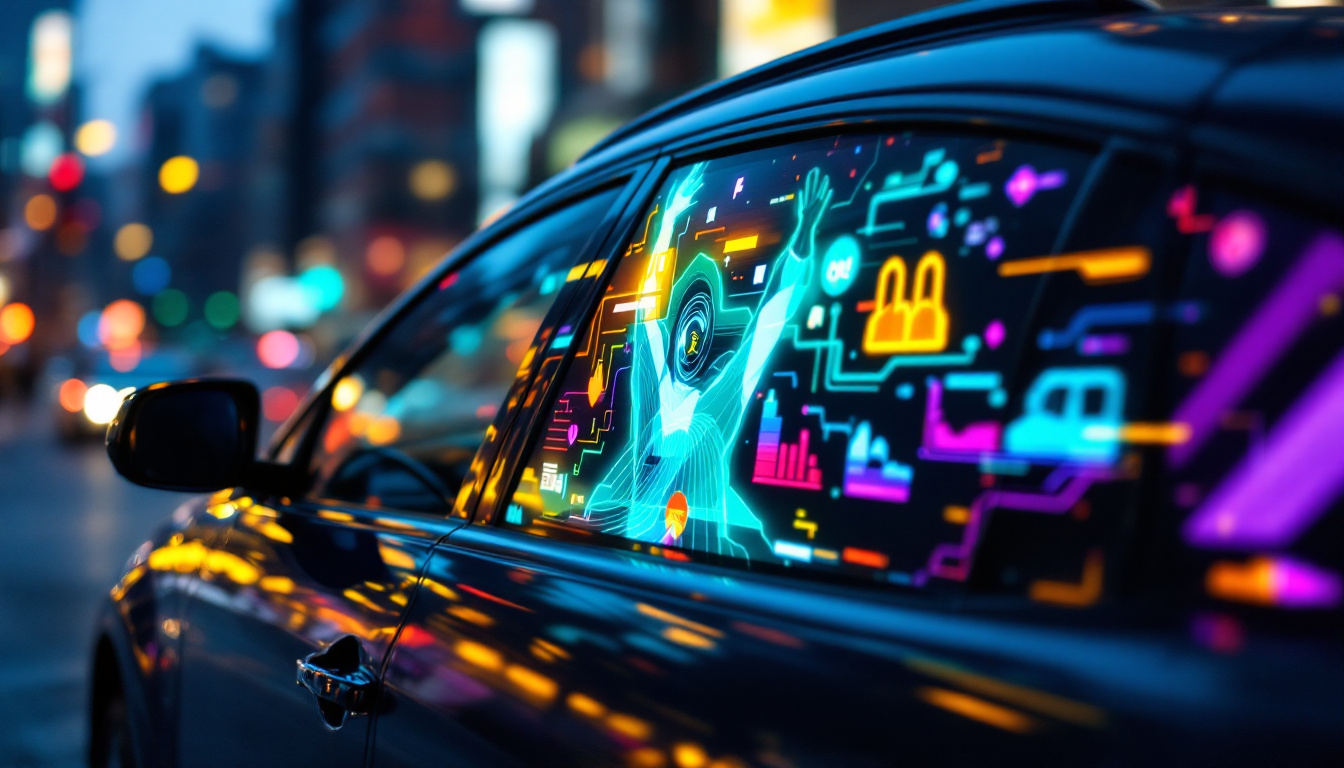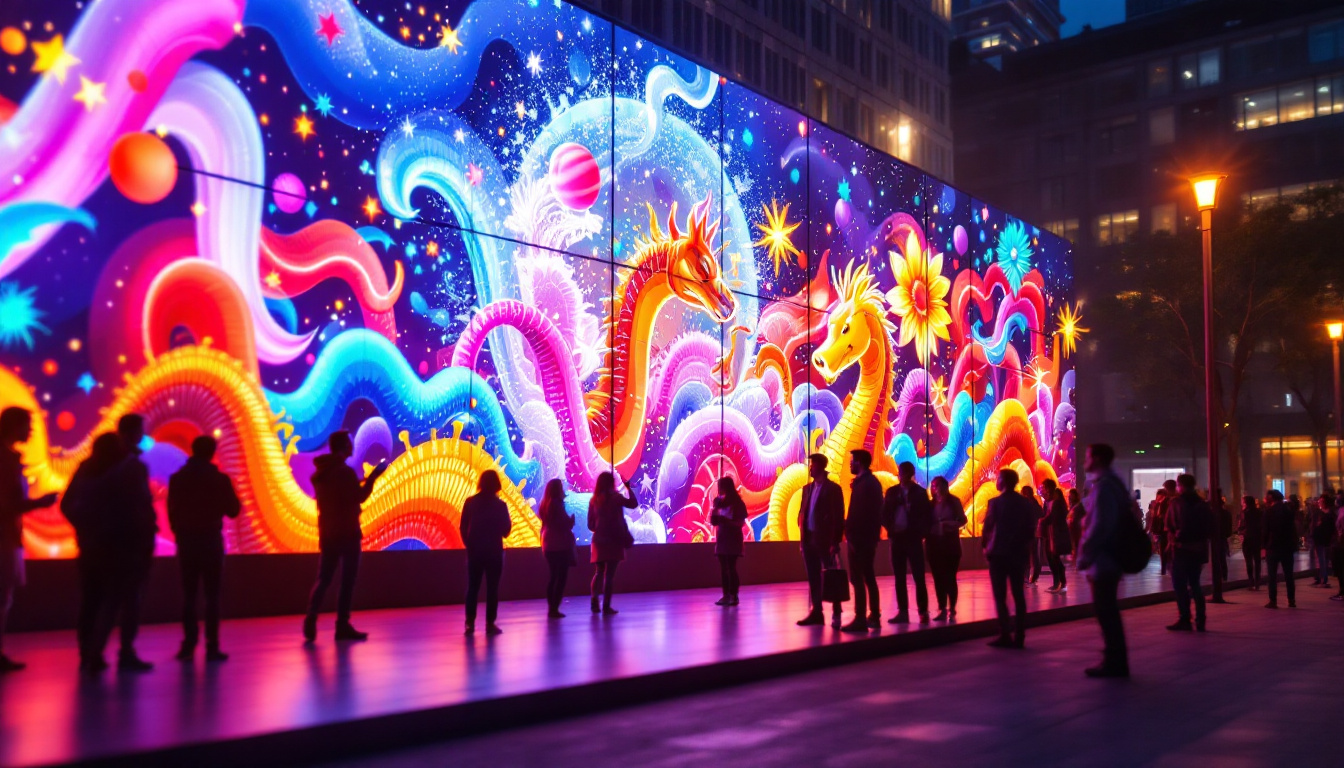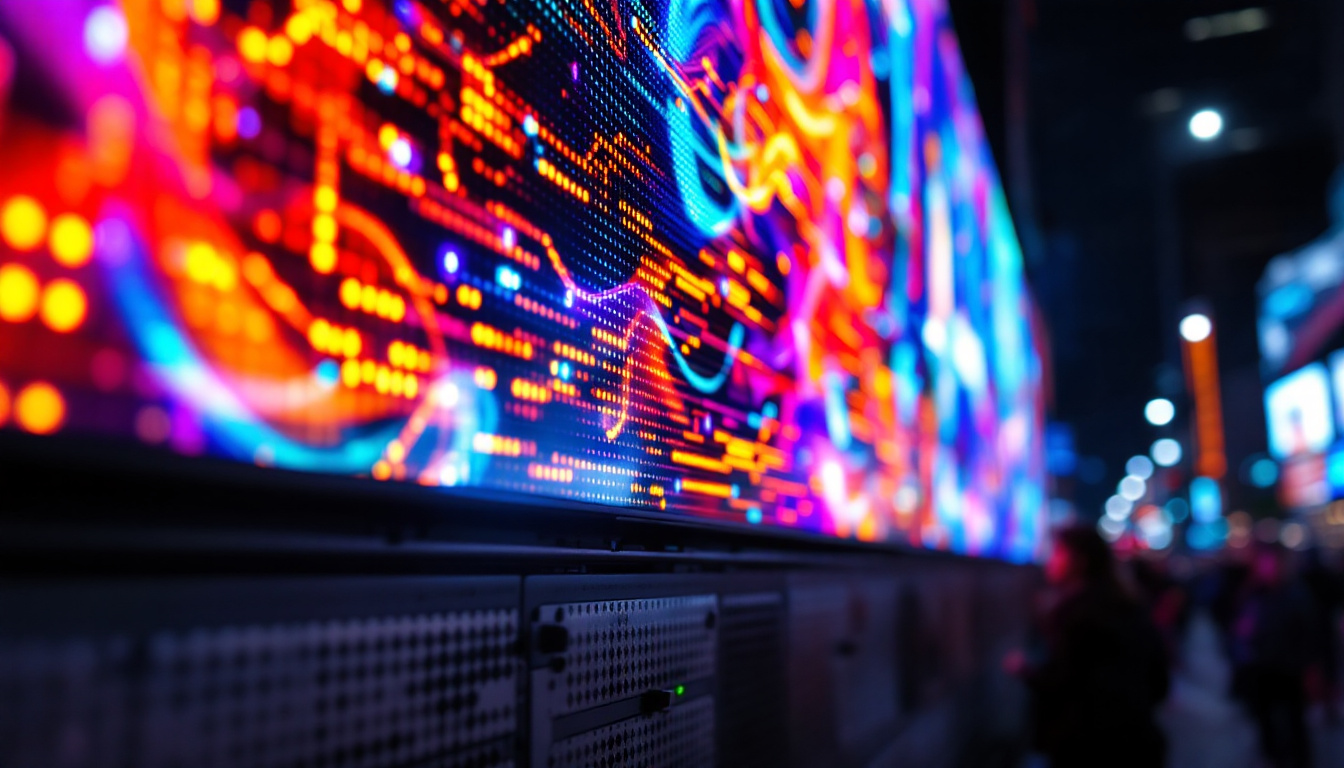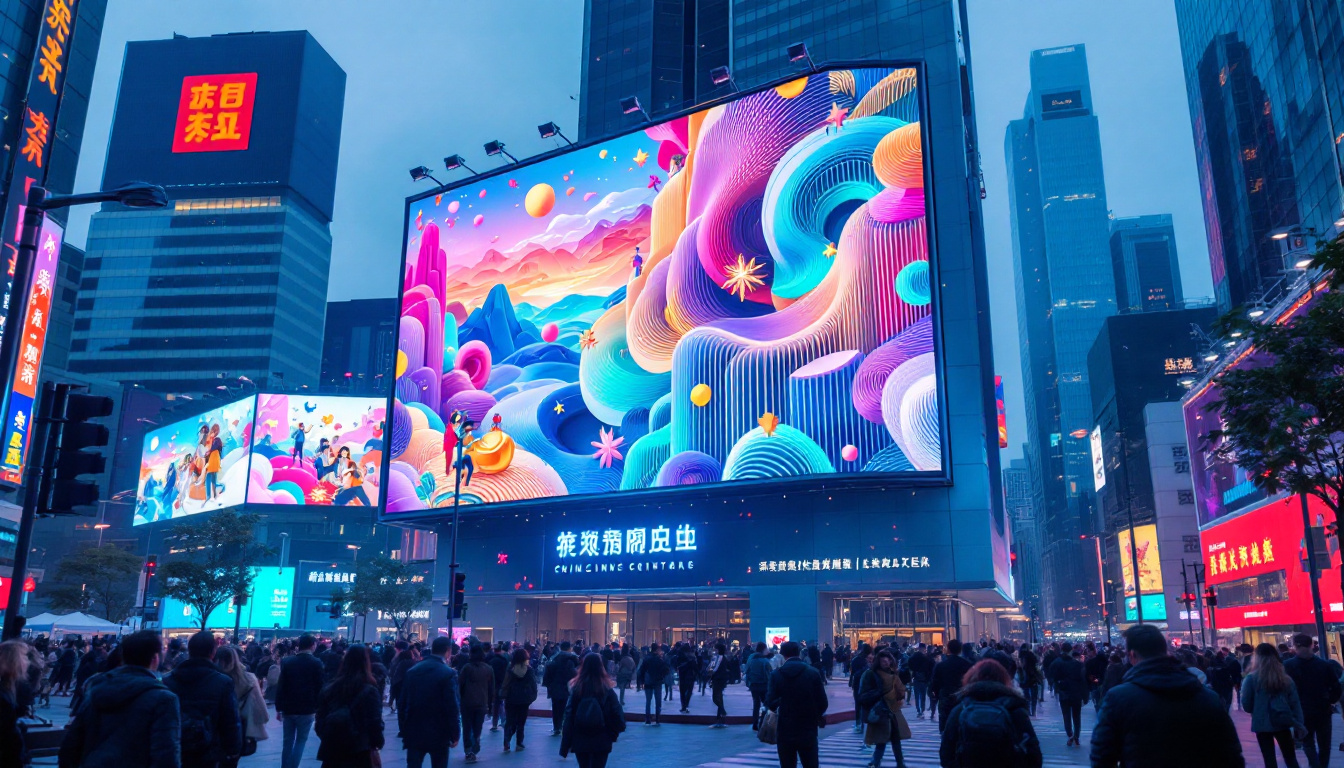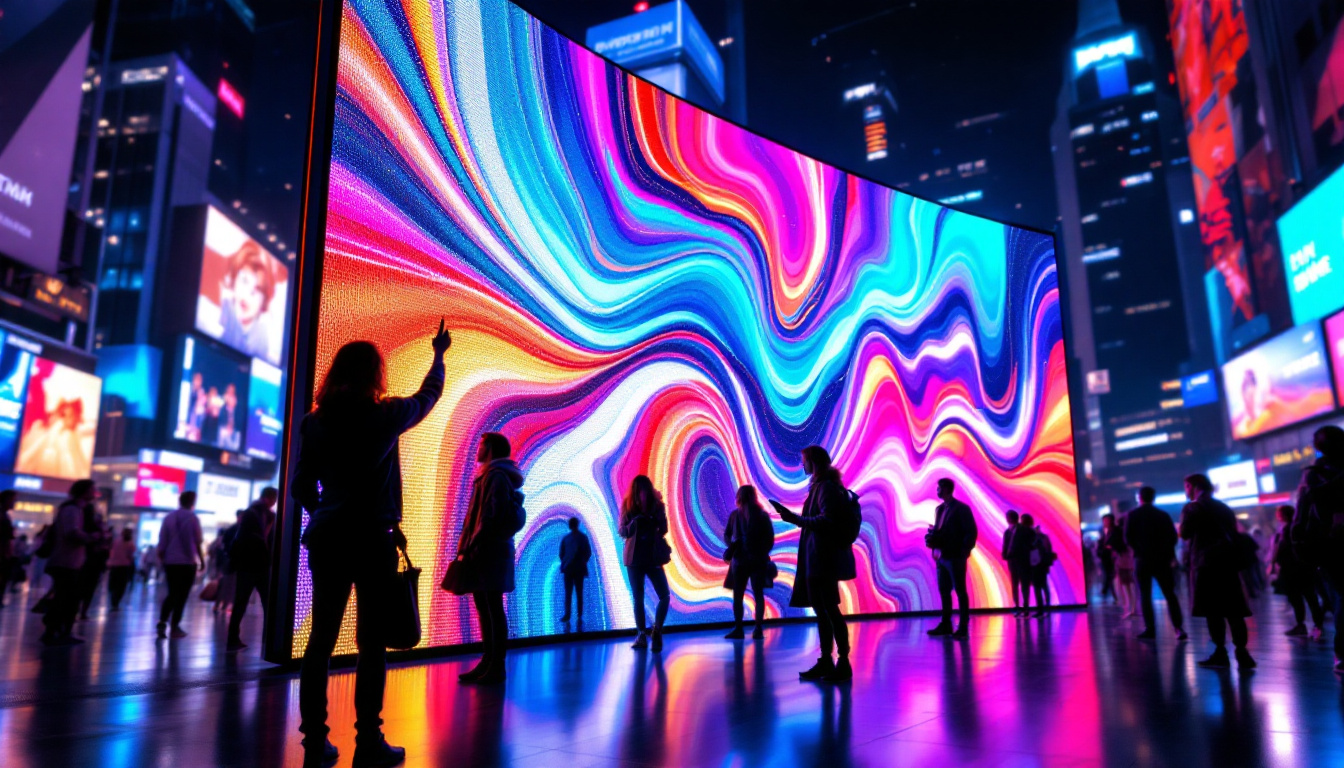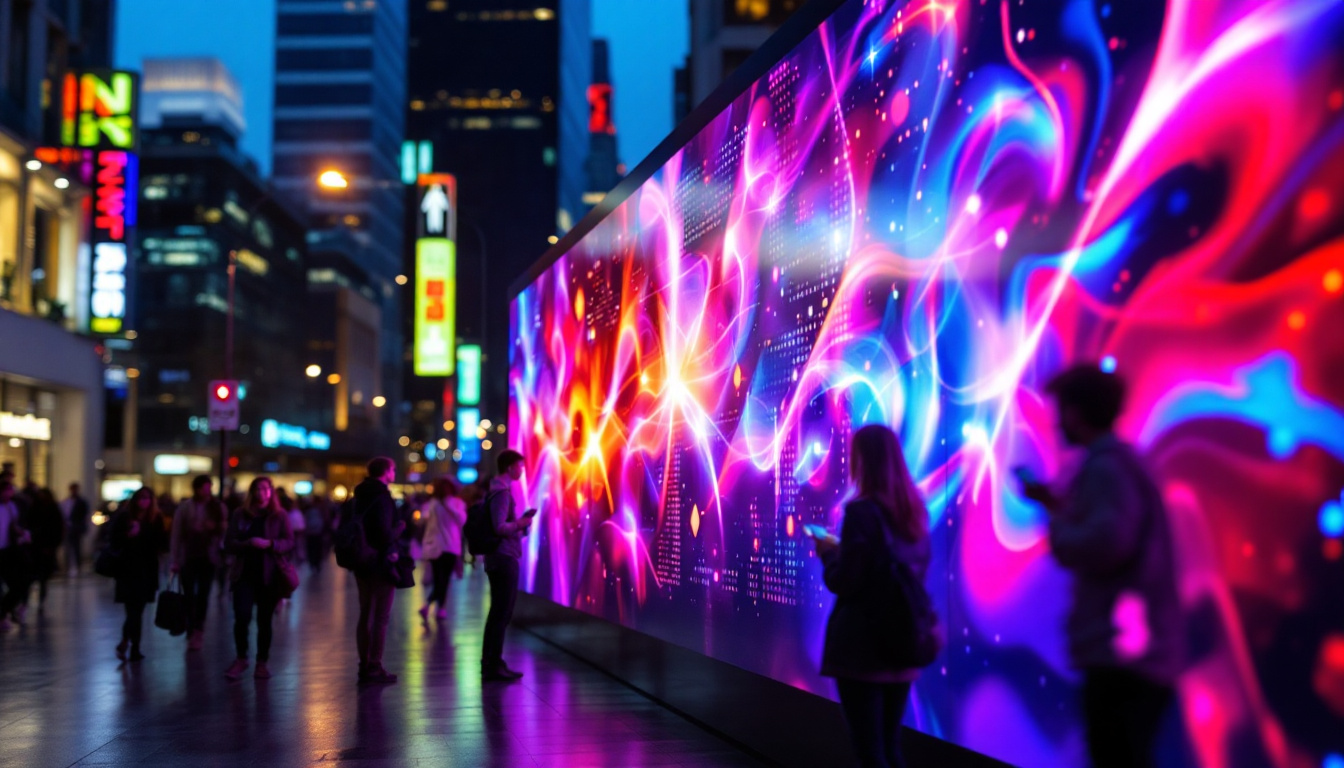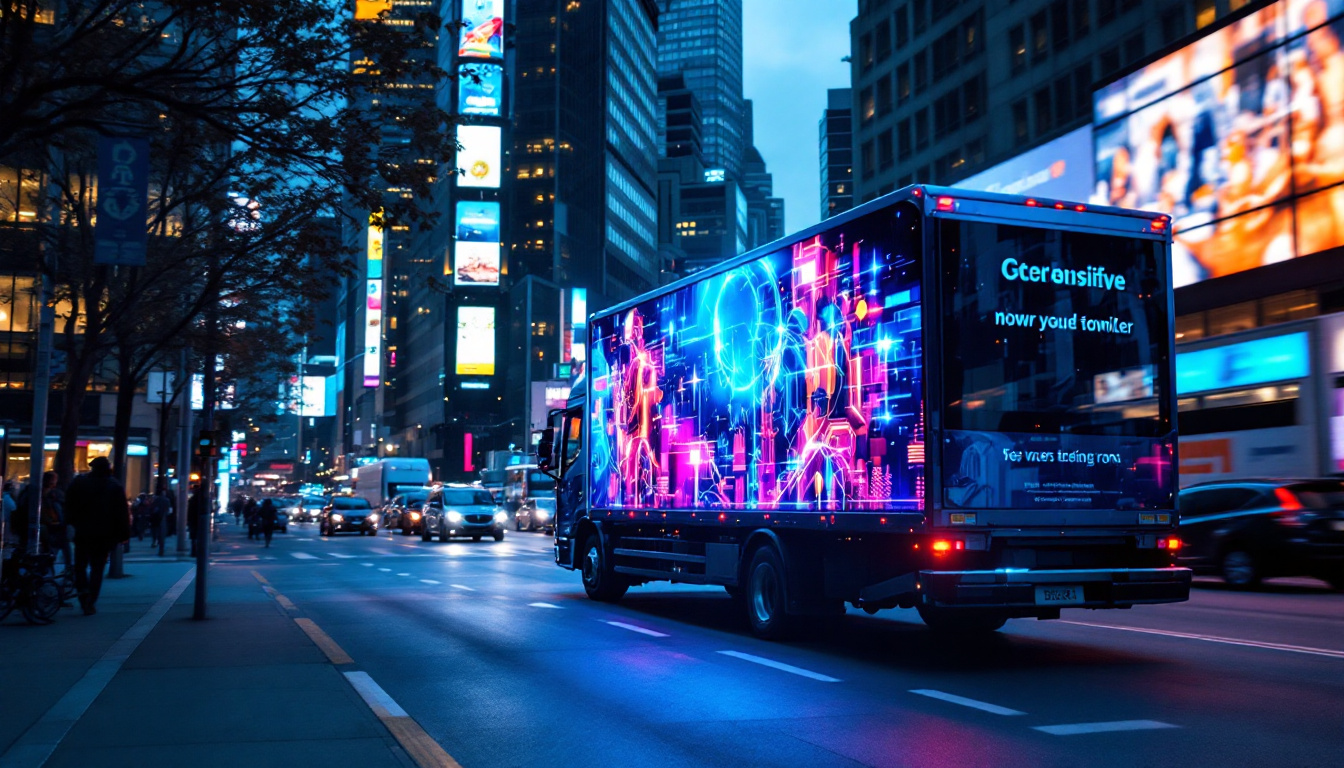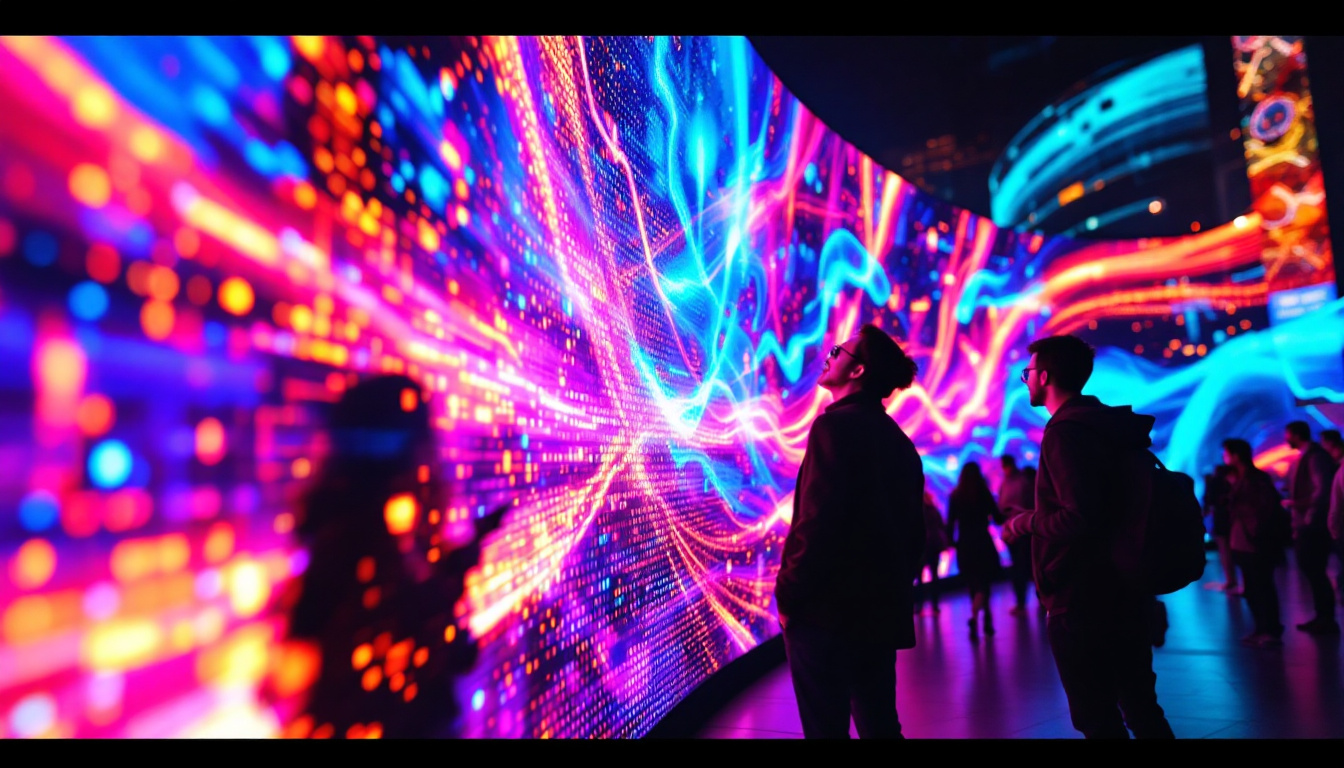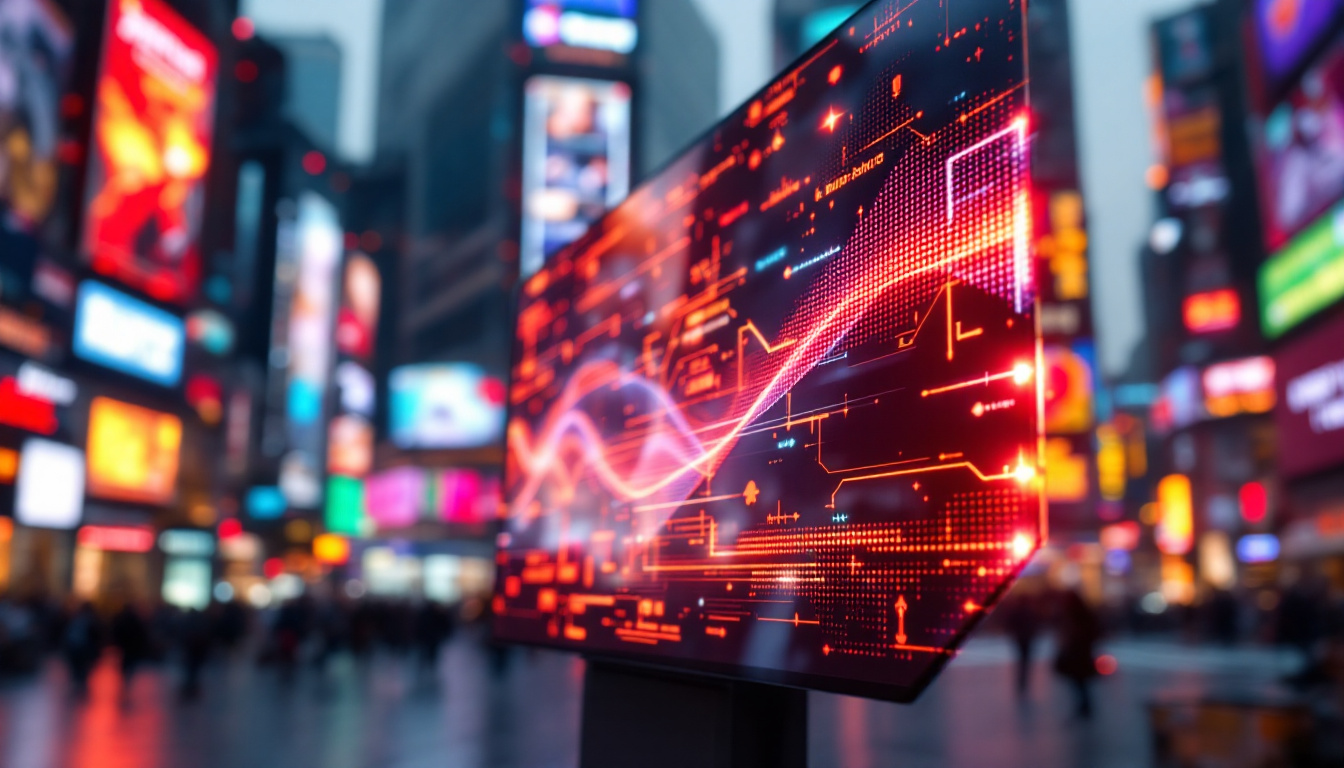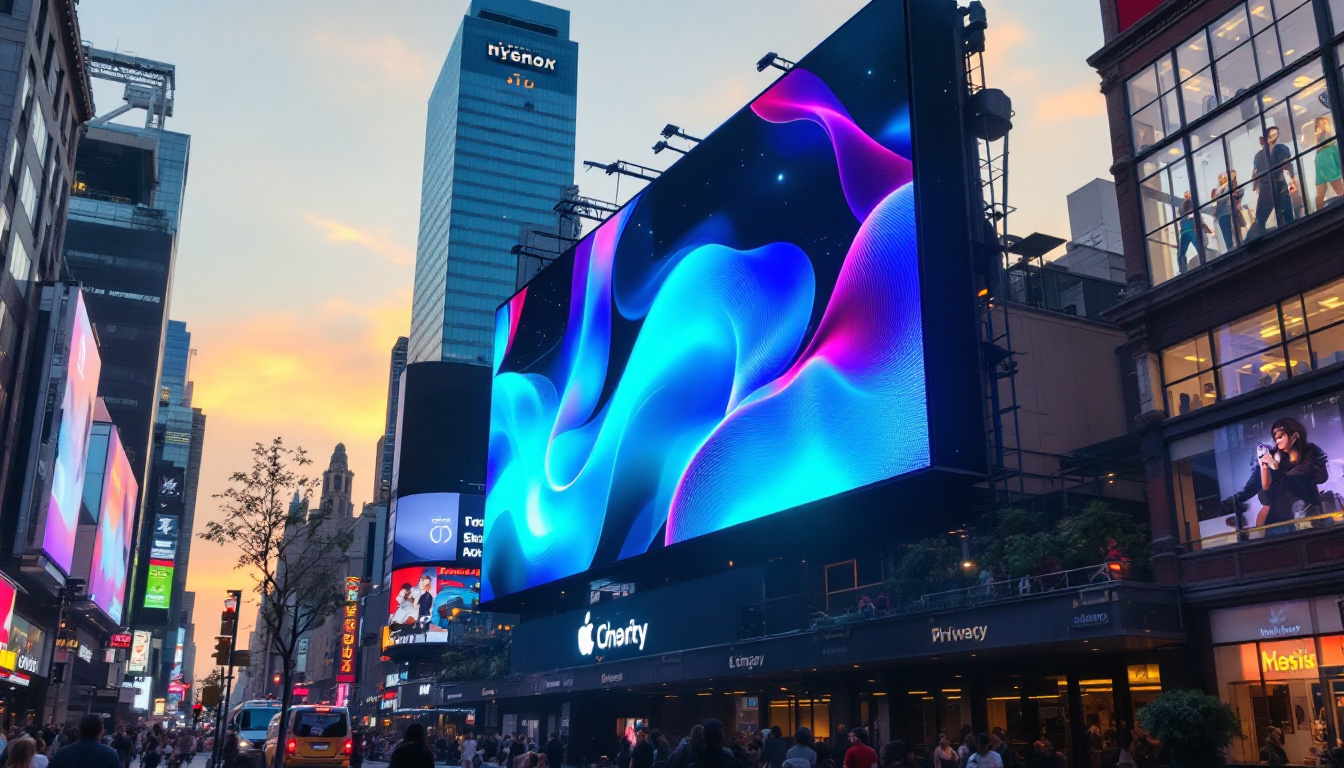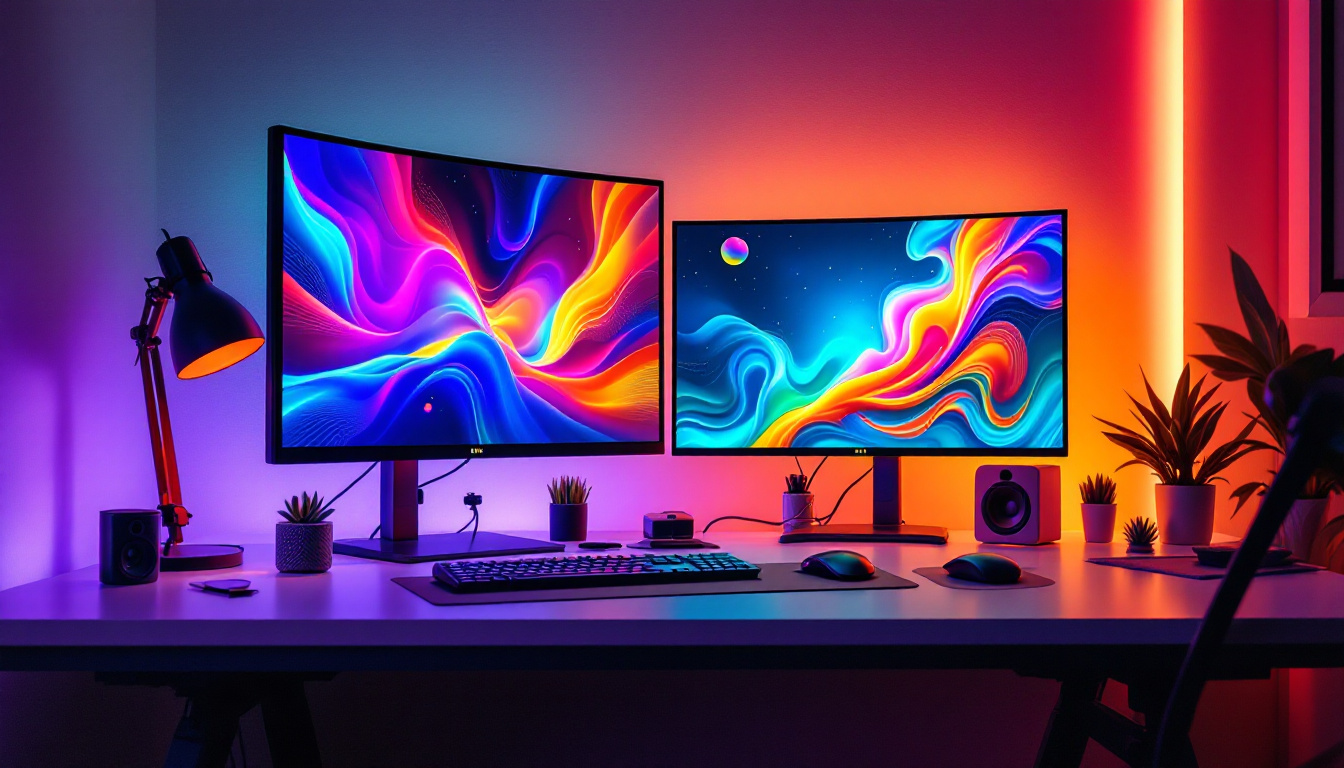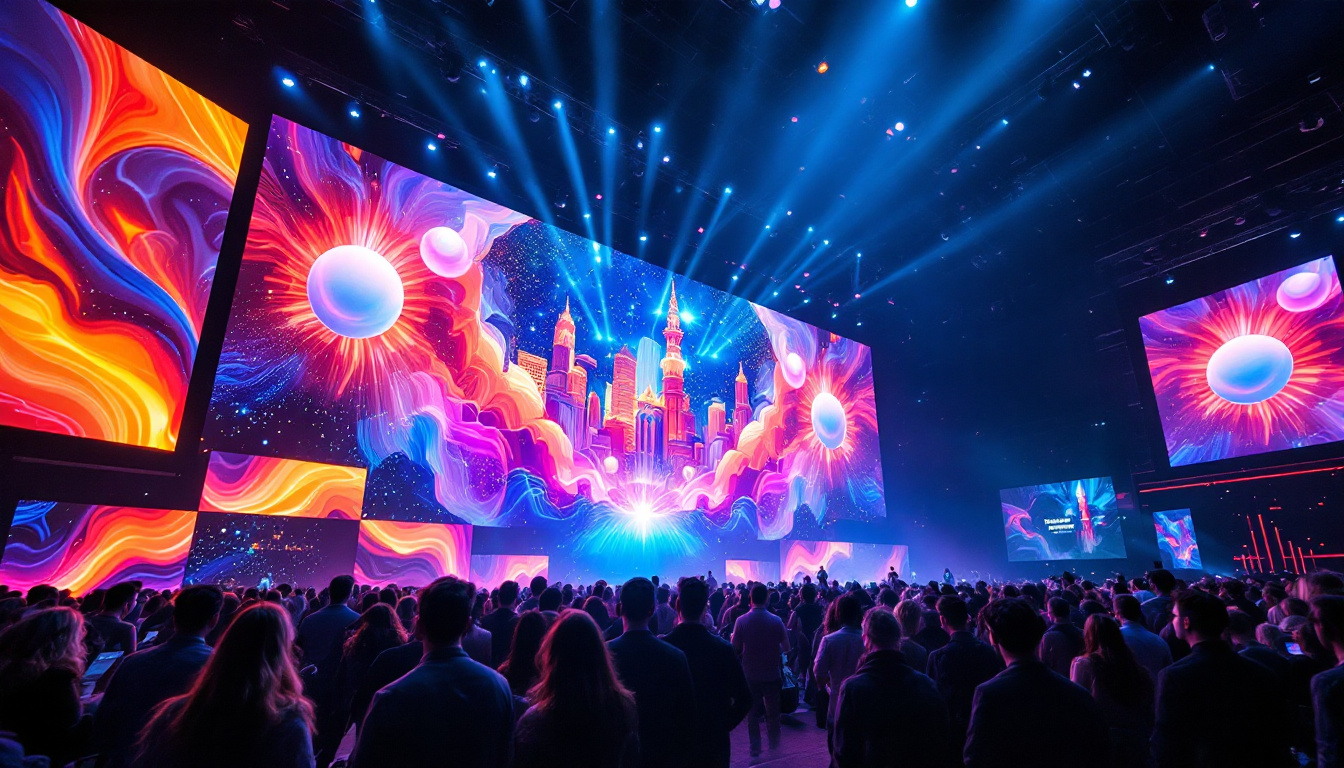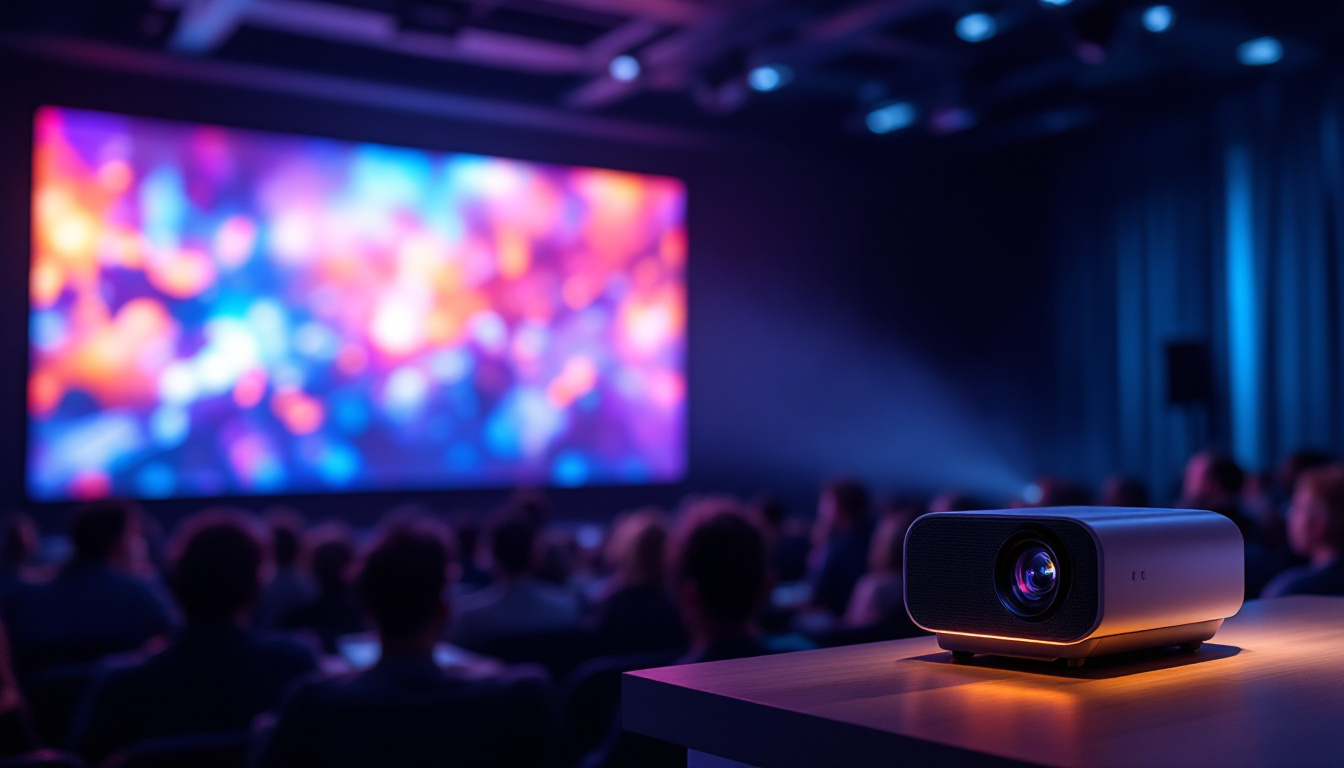In the modern world of visual technology, LED displays have emerged as a popular choice for various applications, especially in commercial settings. The term “TV wall display” typically refers to a large-scale arrangement of multiple screens or panels that work together to create a cohesive visual experience. This article delves into the intricacies of LED displays, exploring their components, advantages, applications, and future trends.
Understanding LED Technology
Light Emitting Diodes (LEDs) are semiconductor devices that emit light when an electric current passes through them. This fundamental technology forms the backbone of LED displays, which are widely used in various formats, from small screens to massive video walls. The efficiency of LEDs not only makes them a popular choice for lighting and displays but also contributes to their growing presence in the realm of smart technology and IoT devices.
How LED Displays Work
LED displays function by combining numerous tiny LED lights to create images and videos. Each pixel is made up of red, green, and blue (RGB) LEDs, which can be adjusted in intensity to produce a wide range of colors. When these pixels are arranged in a grid format, they form a display capable of showing high-definition content. This technology allows for rapid refresh rates, making LED displays ideal for dynamic content such as sports broadcasts and video games.
The brightness and clarity of an LED display depend on several factors, including the quality of the LEDs, the pixel density, and the technology used to drive the display. Modern LED displays often utilize advanced techniques such as dynamic contrast and color calibration to enhance the viewing experience. Additionally, the use of heat sinks and efficient power management systems helps to prolong the lifespan of the LEDs, ensuring that they maintain their performance over time.
Types of LED Displays
LED displays come in various types, each suited for specific applications. The most common types include:
- Direct View LED (DVLED): These displays consist of individual LED modules that can be assembled to create large video walls. They are known for their high brightness and excellent color accuracy, making them perfect for outdoor advertising and large-scale events.
- LED-backlit LCD: These displays use LEDs to illuminate an LCD panel. They offer good picture quality and are commonly used in televisions and computer monitors. This type of display has become increasingly popular due to its ability to produce thinner and lighter screens while maintaining energy efficiency.
- Organic LED (OLED): OLED displays use organic compounds to emit light, resulting in deeper blacks and more vibrant colors. However, they are typically more expensive than traditional LED displays. The flexibility of OLED technology also allows for innovative designs, such as curved screens and even transparent displays, which open up new possibilities for consumer electronics and advertising.
As the technology continues to evolve, we are witnessing the emergence of MicroLED displays, which promise even greater efficiency and performance. MicroLEDs are made up of microscopic LED elements that can be individually controlled, allowing for stunning contrast ratios and color accuracy. This technology is still in its infancy but holds the potential to revolutionize the display industry by combining the best features of both OLED and traditional LED displays.
Advantages of LED Displays
LED displays are gaining popularity due to their numerous advantages over traditional display technologies. Understanding these benefits can help businesses and consumers make informed decisions regarding their visual technology needs.
Energy Efficiency
One of the most significant advantages of LED displays is their energy efficiency. Compared to traditional incandescent or fluorescent lighting, LEDs consume significantly less power, making them an environmentally friendly option. This efficiency translates into lower electricity bills, especially for large installations. Furthermore, the reduced energy consumption contributes to a smaller carbon footprint, aligning with the growing emphasis on sustainability in both corporate and consumer practices. As more organizations strive to meet environmental regulations and corporate social responsibility goals, the transition to LED technology becomes an attractive solution.
Longevity and Durability
LED displays are known for their long lifespan, often exceeding 50,000 hours of use. This longevity reduces the need for frequent replacements, providing cost savings over time. Additionally, LED technology is more robust and resistant to shocks and vibrations, making it suitable for various environments, including outdoor settings. This durability is particularly beneficial for businesses that require displays in high-traffic areas or extreme weather conditions, as they can rely on the performance of LEDs without the constant worry of maintenance or replacement. Moreover, the reduced waste generated from fewer replacements aligns with eco-friendly practices, further enhancing the appeal of LED technology.
High-Quality Visuals
LED displays offer superior image quality, with vibrant colors and high contrast ratios. This quality is particularly important for applications such as advertising, where visual appeal can significantly impact consumer engagement. Moreover, advancements in LED technology have led to improved viewing angles and refresh rates, ensuring a consistent experience across different viewing positions. The ability to produce sharp images and dynamic content makes LED displays ideal for a wide range of applications, from retail signage to large-scale event displays. Additionally, with features like high-definition resolution and customizable brightness settings, businesses can tailor their visual presentations to suit specific environments and audience needs, maximizing their impact and effectiveness.
Applications of LED Displays
The versatility of LED displays allows them to be used in a wide range of applications. From entertainment to information dissemination, their adaptability makes them a preferred choice for many industries.
Advertising and Marketing
In the realm of advertising, LED displays have revolutionized how brands communicate with consumers. Digital billboards and signage can display dynamic content, such as videos and animations, capturing the attention of passersby. This capability allows for real-time updates, making it easier to promote sales, events, or new products. Moreover, the ability to target specific demographics through location-based advertising enhances the effectiveness of campaigns, as brands can tailor their messages to resonate with the audience in a particular area. The interactive features of some LED displays also invite consumer engagement, allowing for instant feedback or participation through QR codes and social media integration.
Corporate and Educational Use
In corporate environments, LED displays are used for presentations, video conferencing, and information sharing. Their clarity and brightness ensure that content is visible even in well-lit rooms. Similarly, educational institutions utilize LED displays for teaching purposes, enhancing the learning experience through engaging visuals. The incorporation of LED technology in classrooms not only aids in the delivery of complex information but also fosters collaboration among students through interactive learning modules. Furthermore, the use of LED displays in corporate lobbies or waiting areas can provide visitors with real-time information, such as company news or upcoming events, thereby enhancing the overall visitor experience.
Entertainment and Events
LED displays play a crucial role in the entertainment industry, particularly in concerts, festivals, and sporting events. Large video walls provide audiences with immersive experiences, displaying live feeds, graphics, and animations. The flexibility of LED technology allows for creative setups that can adapt to various event themes. In addition to traditional venues, LED displays are increasingly being used in outdoor events, where their weather-resistant features ensure reliability in diverse conditions. The integration of synchronized light shows with music enhances the atmosphere, creating a multisensory experience that captivates audiences. Moreover, as technology advances, the trend of using smaller pixel pitches in LED displays is enabling even closer viewing distances, making every seat in the house a prime location for visual enjoyment.
Installation and Maintenance Considerations
While LED displays offer numerous benefits, proper installation and maintenance are crucial for maximizing their potential. Understanding the requirements for setup and care can lead to a more satisfying experience.
Installation Requirements
Installing an LED display involves several considerations, including location, mounting options, and power supply. The installation site should be assessed for factors such as visibility, ambient light, and audience distance. Additionally, choosing the right mounting solution—whether wall-mounted, freestanding, or suspended—can impact the display’s effectiveness.
Maintenance Practices
Regular maintenance is essential to ensure the longevity and performance of LED displays. This includes routine cleaning to remove dust and debris, checking for dead pixels, and monitoring the display’s performance. Many manufacturers offer maintenance contracts to assist with these tasks, ensuring that the display remains in optimal condition.
The Future of LED Displays
As technology continues to advance, the future of LED displays looks promising. Innovations in design, functionality, and interactivity are set to redefine how these displays are used across various sectors.
Emerging Technologies
One of the most exciting developments in LED technology is the integration of smart features. Smart LED displays can connect to the internet, allowing for remote management and content updates. This capability enhances flexibility and responsiveness, making it easier for businesses to adapt their messaging based on real-time data.
Interactive Displays
Interactive LED displays are gaining traction, particularly in retail and educational settings. These displays allow users to engage directly with the content, creating a more immersive experience. Touchscreen capabilities and gesture recognition are examples of how interactivity can enhance user engagement.
Sustainability Initiatives
As environmental concerns continue to grow, the LED industry is focusing on sustainability. Manufacturers are exploring ways to reduce the carbon footprint of production and improve recycling processes for outdated displays. This shift towards sustainability will likely influence consumer preferences, driving demand for eco-friendly options.
Conclusion
LED displays have transformed the visual technology landscape, offering a combination of energy efficiency, longevity, and high-quality visuals. Their versatility allows for a wide range of applications, from advertising and corporate use to entertainment and education. As technology continues to evolve, the future of LED displays promises even more exciting innovations, paving the way for enhanced interactivity and sustainability.
For businesses and consumers alike, understanding the intricacies of LED displays is essential for making informed decisions. Whether considering a large-scale video wall for an event or a simple LED-backlit television for home use, the benefits of this technology are undeniable. Embracing LED displays can lead to improved communication, engagement, and overall visual experiences.
Discover LumenMatrix’s Innovative LED Display Solutions
Ready to elevate your visual experience with the latest in LED technology? LumenMatrix offers a comprehensive range of LED display solutions tailored to meet your needs. From captivating Indoor and Outdoor LED Wall Displays to dynamic Vehicle and Sports LED Displays, our products are designed to enhance brand visibility and audience engagement. Explore our innovative LED Poster Displays, immersive Floor LED Displays, and the versatility of Custom and All-in-One LED Display options, including the cutting-edge LED Transparent Display. Embrace the future of visual communication with LumenMatrix and transform how you connect with your audience. Check out LumenMatrix LED Display Solutions today and start creating unforgettable visual experiences.



